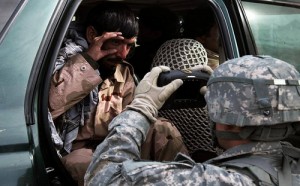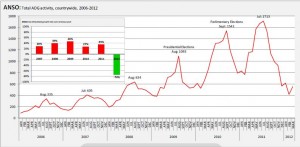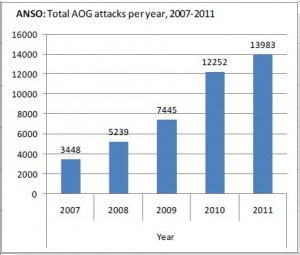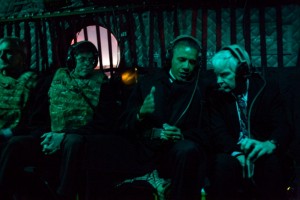Suicide Bomber in Khost Targets Biometric Screening Checkpoint?
A suicide bombing in Khost, Afghanistan has caused multiple casualties today. Accounts of the bombing by Reuters and the New York Times have substantial differences in pertinent details, but the Reuters account stands out because it suggests that the attack was against NATO forces using biometric scanners to screen Afghan citizens at a checkpoint:
A suicide bomber struck a security checkpoint in Afghanistan’s city of Khost on Wednesday, killing at least 16 people and wounding 30, police said, the latest attack to raise questions about stability in the volatile eastern region bordering Pakistan.
/snip/
A witness said that NATO and Afghan troops were using biometric data to screen residents of the provincial capital when the bomber struck.
The photo above is from ISAFMedia’s Flicker feed and demonstrates the equipment used by NATO in collecting biometric data. The caption provided by ISAFMedia reads:
A soldier from 2nd Platoon, A Company, 1-503rd Infantry Battalion, 173rd Airborne Brigade Combat Team enters a member of a private Afghan security company into the Biometrics Automated Toolset (BAT) Handheld Interagency Identity Detection Equipment (HIIDE) System near the village of Heyderk Hel, Wardak Province, Afghanistan, Feb.18, 2010. The BAT HIIDE System assists soldiers in community mapping. U.S. Army photo by Sgt Russell Gilchrest. (Released)
The handset used for collection of the biometric data is quite powerful:
With a high-capacity storage of up to 22,000 full biometric portfolios (two iris templates, ten fingerprints, a facial image, and biographic data), L-1’s HIIDE Series 4, or Handheld Interagency Identity Detection Equipment, is receiving praise for its functionality and appeal to Afghanis wishing to have proper identification that would distinguish them from suspected terrorist in question.
The product description on L-1’s Web site reads:
The HIIDE is the world’s first hand-held tri-biometric system that allows users to enroll and match via any of the three primary biometrics: iris, finger and face. The intuitive user interface makes it easy to enter biographic data to create a comprehensive database on the enrolled subject. The HIIDE provides complete functionality while connected to a host PC or when operating in the field un-tethered.
The featured biometric technology is presently being used in a ring of security checkpoints around Kandahar City in Afghanistan, where Canadian operated bases are also being equipped with it. The enrollment procedure is voluntary and takes approximately six minutes to complete. All the biometric information is sent securely to the database of ISAF, NATO’s International Security Assistance Force.
From the description by Reuters, it appears that the bomber attacked a screening point in Khost that was using the biometric scanner to screen civilians in the area. The biometric screening program is touted by NATO as a key tool in re-integration of former insurgents: Read more →




